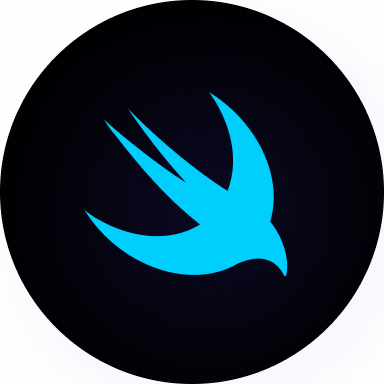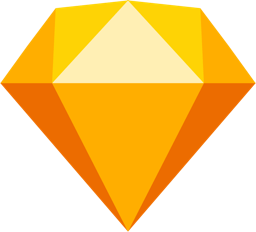Create a visionOS App Icon
Add to favorites
Discover how to design the Photos app icon, enhancing the visual experience in visionOS.
Play video
Create 3D UI for iOS and visionOS in Spline
1
Intro to Spline for iOS and visionOS
7:25
2
Basic Shapes in 3D Smart Home
10:12
3
Materials, Lights and Effects
12:11
4
Camera Animation and States
7:05
5
3D Thermostat and Cloner
14:38
6
Buttons and Components
8:26
7
Path Animation and Rotation
7:10
8
Create a 3D iOS App Icon
7:09
9
Create a visionOS App Icon
9:53
10
Create 3D UI Scene
9:49
11
Particles Animation
20:30
12
Export to SwiftUI Project
16:20
VisionOS
VisionOS app icons are circular and consist of a background layer with one or two layers on top, creating a three-dimensional object that subtly expands when viewed by users.
![]()
![]() 📒 Human Interface Guidelines
📒 Human Interface Guidelines
visionOS icon
We aimed to maintain a familiar home view, taking it a step further by rendering app icons in three-dimensional realism within your space. As people glance at them, they dynamically expand. The system enhances this visual experience by introducing specular highlights and shadows, reinforcing the subtle depth between layers.
How can you craft an exceptional icon design? Here are key tips:
- Utilize up to three layers: a background layer and up to two foreground layers.
- Employ a combination of flat layers; shadows and glass layers will be applied automatically.
- Design the background layer as an edge-to-edge square image.
- Aim to keep graphics centered; if they're too close to the edge, they may appear off-center when expanded.
![Create a visionOS App Icon image 3]()
How to Create a visionOS App Icon on Spline
I want to show that we can also achieve the same thing with Spline. we can create a icon from scratch and export as PNG or JPG. Let’s create an App icon in hight resolution. First we are going to setup the frame to the resolution 1024 x 1024.
- Frame Size: Set the dimensions to 1024 x 1024 pixels.
- Guide Visibility: Adjust the guide to 0% for improved visibility during the design process.
Add Background layer
Now, let's lay the foundation by adding a background layer using a rectangle shape. The background layer provides a backdrop for our icon. By using a white color with specific effects like corner radius, roundness, extrusion, and bevel, we can add depth and dimensionality to the background, enhancing the overall visual appeal of the icon.
- Rectangle Size: Create a rectangle with dimensions of 1024 x 1024 pixels.
- Color: Choose a white color for the background.
- Corner: Set the corner radius to 700.
- Roundness: Opt for an arc-shaped roundness.
- Extrusion: Apply an extrusion effect with a value of 16.
- Bevel: Set the bevel effect to 20.
- Bevel Sides: Adjust the bevel sides to 10.
![]() 📒 Note that I used the circle as a background for demo purposes only.
📒 Note that I used the circle as a background for demo purposes only.
Create Foreground Elements
First, we need to create the first petal for the base.
- Shape: Use the rectangle shape.
- Position: Center the petals.
- Size: Set dimensions to X: 240 and Y: 366.
- Corner: Apply a corner radius of 300.
- Roundness: Opt for an arc-shaped roundness.
- Extrusion: Add an extrusion effect with a value of 16.
- Bevel: Set the bevel effect to 2.
- Bevel Sides: Adjust the bevel sides to 2.
Add material to Objet
Next, let's apply a material to the shape. Before doing so, we can include an image for reference.
- Color: Choose #ECA242 for the petal color or choose your own color.
- Lighting: Set opacity to 30% with an overlay effect.
- Rainbow: Apply a screen effect with 30% intensity.
- Depth: Use radial type with black at 0% opacity and black at 100% opacity.
![]()
How to Use Cloner in Spline
Now, we'll create a beautiful floral element using a cloner tool. The cloner tool enables us to efficiently replicate and arrange the flower petals in a circular pattern. Adjusting parameters like count and radius allows for customization of the arrangement, resulting in a cohesive and balanced design.
- Position: Center the object, X 0 and Y 0.
- Go to Cloner panel
- Cloner Type: Choose "Radius" for distribution.
- Base: Hide the base.
- Count: Set the count to 8.
- Radius: Adjust the radius to 206.
- Alignment: Ensure alignment is enabled.
![]()
Why Create 3 Layers in Spline
To recreate this photo app on Spline, I need to create 3 layers. This is because Spline has a bug that causes glitches when moving objects at certain angles. Therefore, I'll separate the shapes using boolean functionality to avoid these issues.
![]()
How to Convert to Instances
Next, I want to add color to individual petals. To do that, we need to convert them to instances. Here's how:
- Go to the Cloner panel.
- Click on the "Convert to Instances" button.
- Hide Main Component
- Work on the instance
![Create a visionOS App Icon image 8]()
Select all rectangle layers and adjust their Y-coordinate to 5. The rectangles will automatically align vertically, one below the other, this will fix the problem with glitch.
- Open all the Instances
- Select all the rectangle by pressing ⌥ ⌘ Click or Alt + Ctrl + Click ( Children 1 by 1)
- Navigate to rotation property
- Adjust their Y-coordinate to 5
Add material to Florals
You can use the dropper tool to clone the color from the photo reference.
- Go to the material panel and click on the color picker.
- Set the colors as follows: Layer 1: #D19416, Layer 2: #D19416, Layer 3: #D19416, Layer 4: #D19416, Layer 5: #D19416, Layer 6: #D19416, Layer 7: #D19416, Layer 8: #D19416.
- You can use the dropper tool to sample the color directly from the photo reference.
- Name this group "Layer 1".
![Create a visionOS App Icon image 9]()
Create Layer 2
In this step, we'll utilize a different technique for creating layer 2, using a boolean modifier with existing shapes.
- Duplicate the group named "Layer 1."
- Rename this new group to “Layer 2.”
- Right-click on the selected layers, choose 'Detach Instance', then 'Ungroup.' After that, delete the unneeded group by pressing the 'Delete' key on your keyboard.
- Rename the individual layers within this group from 1 to 8 for clarity.
- Adjust the Y rotation back to 0 for all the rectangles.
- Select layers 1 and 2, then duplicate them.
Let's navigate to the Boolean Modifier properties.
- Apply a Boolean Modifier and select 'Intersection' from the options.
- Repeat these steps for all subsequent layers as well.
![Create a visionOS App Icon image 10]()
Add material to group Layer 2
We can use a dropper tool to clone the color from the reference.
- Go to material panel then click on the color picker.
- Select shape one by one
- Shape 1 #D19416
- Shape 2 #D19416
- Shape 3 #D19416
- Shape 4 #D19416
- Shape 5 #D19416
- Shape 6 #D19416
- Shape 7 #D19416
- Shape 8 #D19416
![Create a visionOS App Icon image 1]()
Create Layer 3
To add complexity to our icon, we'll replicate and modify the previous layer using boolean operations.
- First duplicate the group Layer 2
- Rename this new group to “Layer 3”
- Rename the duplicated layers from 1 to 8 for organization.
- Select layers 1 and 2, then duplicate them.
- Apply a Boolean Modifier and select the Intersection option.
- Repeat the process for all layers to achieve a cohesive design.
![Create a visionOS App Icon image 2]()
Add Color to Group Layer 3
Add depth to your design by using the dropper tool to pick colors from a reference or select specific shades for each shape.
- Shape 1: #D19416
- Shape 2: #D19416
- Shape 3: #D19416
- Shape 4 :#D19416,
- Shape 5: #D19416
- Shape 6: #D19416
- Shape 7: #D19416
- Shape 8: #D19416
![Create a visionOS App Icon image 3]() Congratulations on completing all the steps! It's always rewarding to see a project come together.
Congratulations on completing all the steps! It's always rewarding to see a project come together.
![]()
Exporting Images for visionOS
Exporting images for visionOS requires attention to detail and specific settings to ensure compatibility and quality. Follow these steps to export your design effectively.
Prepare the Design
Before exporting, make sure to reset the corner of the rectangle to 0 to ensure compatibility with VisionOS standards. This step ensures that the exported images will display correctly on visionOS devices.
Exporting Process
Follow these steps to export your design as images:
- Composition Check: Verify that the size of the composition is set to 1024 by 1024 pixels. This step guarantees that your design is within the designated boundaries for VisionOS.
- Access Export Options: Locate and click on the Export button situated on the toolbar. This action will open up a menu with various export options.
- Select Image Format: From the Type dropdown menu, choose "Image." This selection indicates that you intend to export your design as an image file.
- Choose File Format: Decide whether you want to export your image as a JPG or PNG file. Consider factors such as file size and image quality when making your selection. In our case, set to PNG.
- Adjust Pixel Density Ratio: Depending on your requirements, you may need to adjust the Pixel Density Ratio. This setting determines the resolution and clarity of the exported image. In our case, we can leave the aspect ratio at 1.
- Background Color: Background Color: You can choose to hide or show it as you prefer. We need to hide the Background as we use PNG
- Initiate Export: Once you have configured the export settings according to your preferences, click on the Export button to export the images.
![]() 📒 Note that we will export two images: the background and the foreground, which contains the florals.
📒 Note that we will export two images: the background and the foreground, which contains the florals.
Parallax Previewer App
Parallax brings a 3D effect to Apple TV's interface, highlighting elements with depth and motion. Use the Parallax Previewer to ensure your layered images display correctly, supporting formats like .png, .jpg, and .psd, and export them for Xcode. Transform static images into dynamic, immersive experiences on tvOS and VisionOS.
To utilize the Parallax Previewer app for macOS, follow these steps after downloading it from Apple Design:
- Launch Parallax Previewer: Open the Parallax Previewer application on your macOS device.
- Create a New Project: Navigate to the "File" menu and select "New visionOS App Icon" to initiate a new project specifically tailored for visionOS app icons.
- Import Layered App Icon Images: Drag each layered app icon image that you exported from Spline or Figma into the layer list within the Parallax Previewer interface. These images should include the background, middle, and front layers.
- Adjust Position and Size: By accessing the properties inspector located on the right side of the window, you can fine-tune the position and size of the imported images. This allows you to align them precisely within the designated area.
- Preview the Parallax Effect: Move your mouse cursor around the image displayed in the preview area to experience the parallax effect firsthand. As you move the cursor, observe how the layered images interact to create a dynamic and immersive visual experience.
- Note Regarding Background Image: It's important to note that when adding a square image (1024 x 1024) as the background, the system automatically applies a circular mask to ensure compatibility and aesthetic consistency with visionOS standards.
- For further guidance on parallax and crafting layered images, consult the tvOS Design Themes in the Human Interface Guidelines.
![]() 📒 This app is for preview purposes only.
📒 This app is for preview purposes only.
Conclusion
Congratulations on mastering icon design for VisionOS! With tools like Spline and the Parallax Previewer, you've learned to create engaging icons that pop on the home screen. Keep exploring and experimenting to unlock your full creative potential. Your icons have the power to make a lasting impact in the Apple ecosystem. Happy designing!
Templates and source code
Download source files
Download the videos and assets to refer and learn offline without interuption.
Design template
Source code for all sections
Video files, ePub and subtitles
Assets
Videos
1
Intro to Spline for iOS and visionOS
Comprehensive 3D Design Course: From Basics to Advanced Techniques for iOS and visionOS using SwiftUI
7:25
2
Basic Shapes in 3D Smart Home
Transforming simple shapes into a 3D base for a house model scene
10:12
3
Materials, Lights and Effects
Enhance your 3D scene by incorporating elements from the lore ibrary and adding materials and lighting to add realism
12:11
4
Camera Animation and States
Creating dynamic scenes with the addition of animations
7:05
5
3D Thermostat and Cloner
Learn how to design a thermostat interface with basic shapes
14:38
6
Buttons and Components
Creating knobs and buttons elements and turning them to components
8:26
7
Path Animation and Rotation
Animating a Thermostat Interface: A Step-by-Step Guide
7:10
8
Create a 3D iOS App Icon
Crafting iOS 3D Icons: A Comprehensive Tutorial
7:09
9
Create a visionOS App Icon
Discover how to design the Photos app icon, enhancing the visual experience in visionOS.
9:53
10
Create 3D UI Scene
Learn how to design and implement 2D user interfaces to integrate within 3D scenes, enabling the triggering of actions on any 3D object
9:49
11
Particles Animation
Discover the new particle feature designed to create a range of visual effects like fire, smoke, rain, snow, and other dynamic phenomena
20:30
12
Export to SwiftUI Project
Crafting Stunning 3D Experiences: A Step-by-Step Guide with Spline for iOS Apps
16:20
Meet the instructor
We all try to be consistent with our way of teaching step-by-step, providing source files and prioritizing design in our courses.
Akson Phomhome
UI Designer
Designer at Design+Code.
13 courses - 60 hours

AI Design with Ideogram
Meet Ideogram, an AI-powered image generation tool that takes your ideas and transforms them into stunning visuals. Whether you're a designer, marketer, or just a visual enthusiast, Ideogram simplifies the creative process. In this guide, we’ll walk you through step-by-step instructions to create beautiful logos, social media posts, and more.
1 hrs

Build a SwiftUI app with Claude AI
This comprehensive SwiftUI course combines cutting-edge AI assistance with hands-on development, guiding you through the process of transforming Figma designs into fully functional iOS applications. Leveraging Claude 3.5 Sonnet, you'll learn to efficiently generate and refine SwiftUI code, create reusable components, and implement advanced features like animations and responsive layouts.
9 hrs

Prototype and Code iOS apps in Figma and SwiftUI
Welcome to our course on designing a sleek wallet interface with Figma! You’ll learn to create a visually appealing and functional wallet interface using DesignCode and Apple UI Kits. Master prototyping, swipe gestures, carousel animations, overlays, and reusable components. Plus, explore a Figma plugin to easily transition from design to SwiftUI. By the end, you’ll create dynamic, user-friendly prototypes.
3 hrs

Create 3D UI for iOS and visionOS in Spline
Comprehensive 3D Design Course: From Basics to Advanced Techniques for iOS and visionOS using SwiftUI
3 hrs

3D UI Interactive Web Design with Spline
Learn to create 3D designs and UI interactions such as 3D icons, UI animations, components, variables, screen resize, scrolling interactions, as well as exporting, optimizing, and publishing your 3D assets on websites
3 hrs

Design and Prototype for iOS 17 in Figma
Crafting engaging experiences for iOS 17 and visionOS using the Figma design tool. Learn about Figma's new prototyping features, Dev Mode, variables and auto layout.
6 hrs

Design and Prototype Apps with Midjourney
A comprehensive course on transforming Midjourney concepts into interactive prototypes using essential design techniques and AI tools
8 hrs

Web App Design using Midjourney and Figma
Get UI inspirations from Midjourney and learn UI design, colors, typography as a beginner in Figma
2 hrs

UI Design for iOS 16 in Sketch
A complete guide to designing for iOS 16 with videos, examples and design files
3 hrs

UI Design Android Apps in Figma
Design Android application UIs from scratch using various tricks and techniques in Figma
2 hrs

UI Design Smart Home App in Figma
Design a Smart Home app from scratch using various tricks and techniques in Figma
2 hrs

UI Design Quick Apps in Figma
Design application UIs from scratch using various tricks and techniques in Figma
12 hrs

Figma Handbook
A comprehensive guide to the best tips and tricks in Figma
6 hrs
